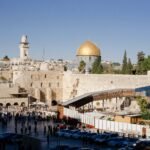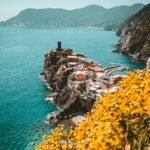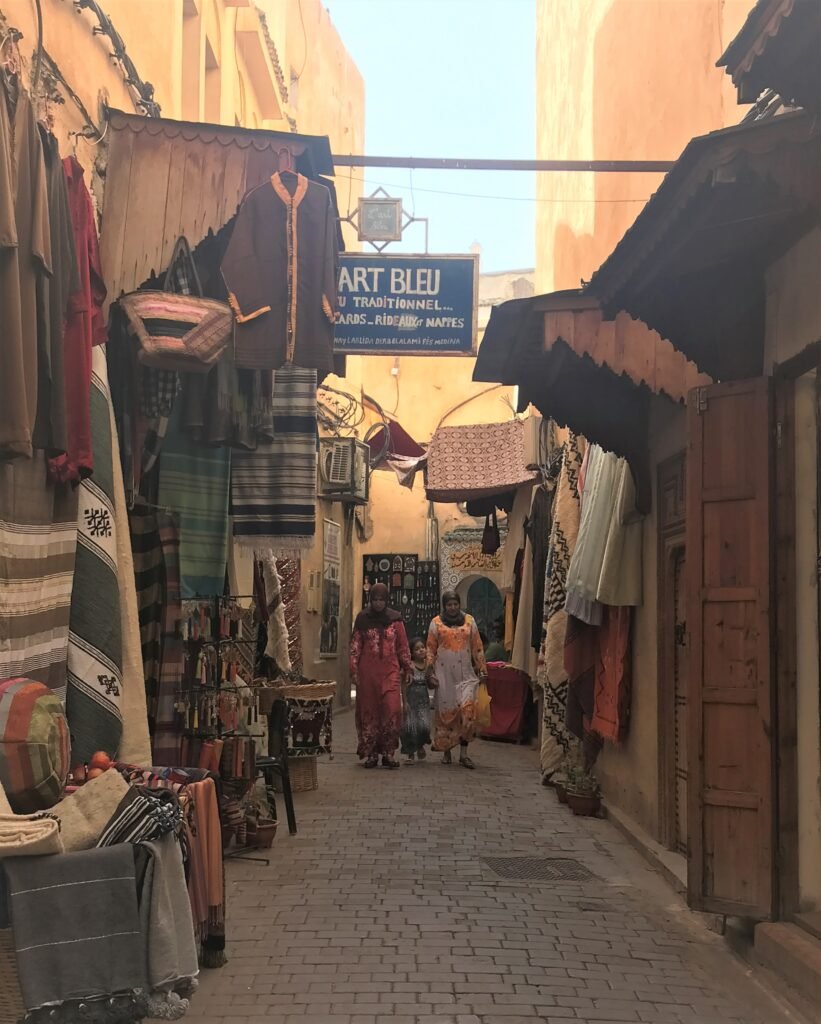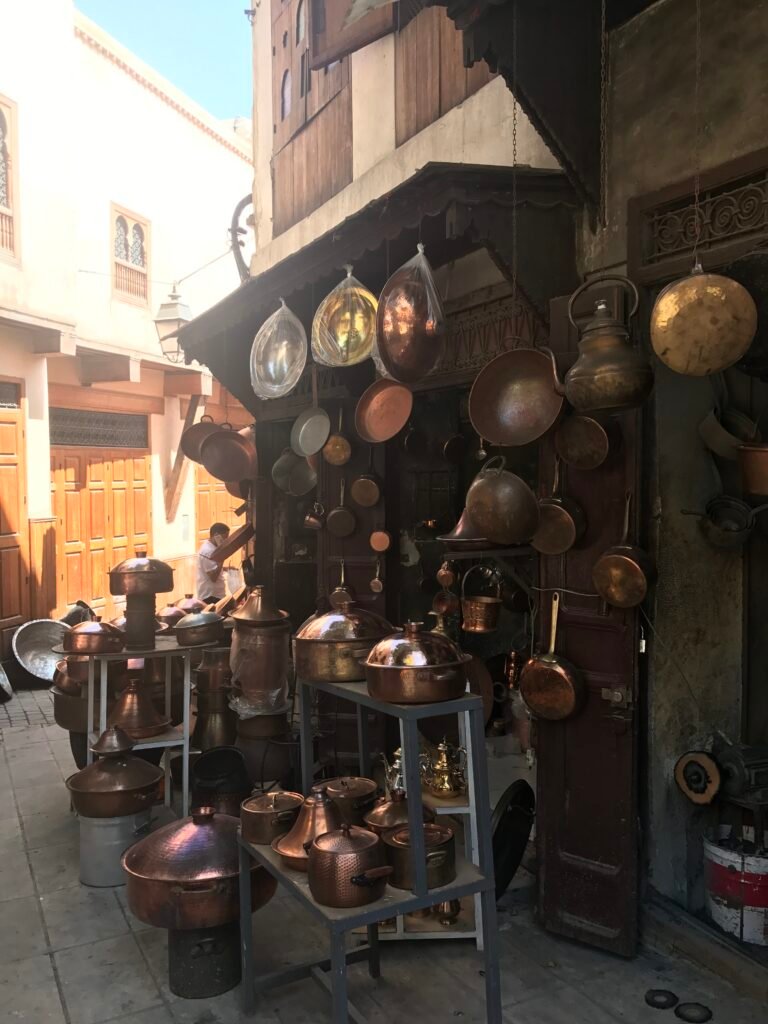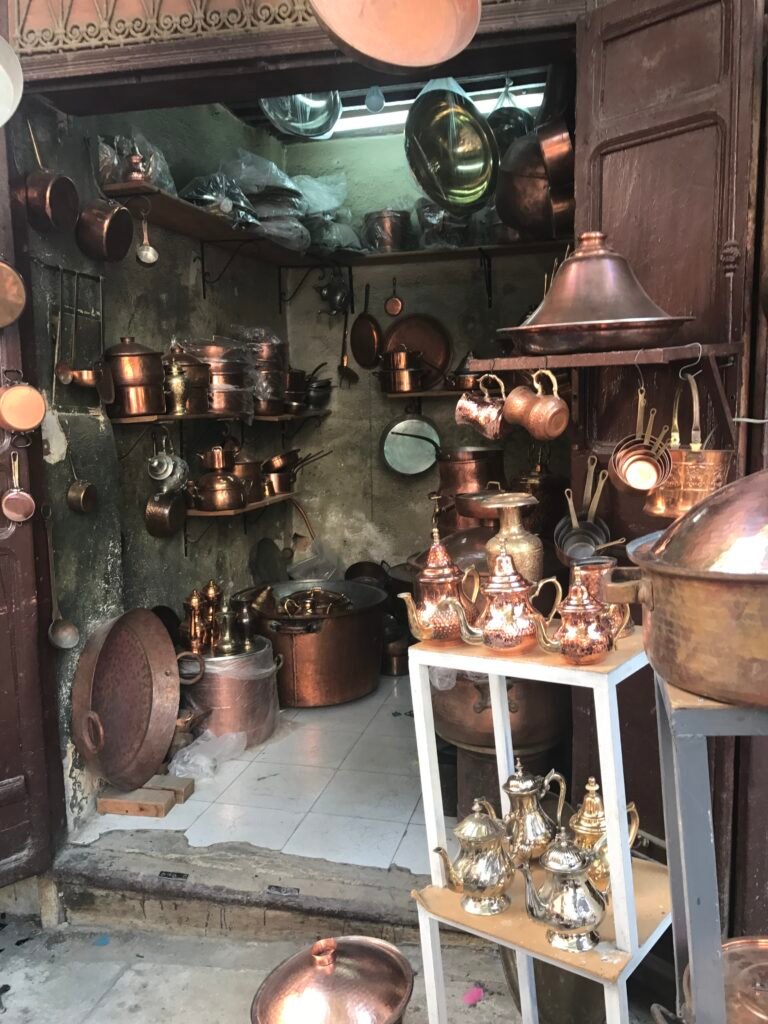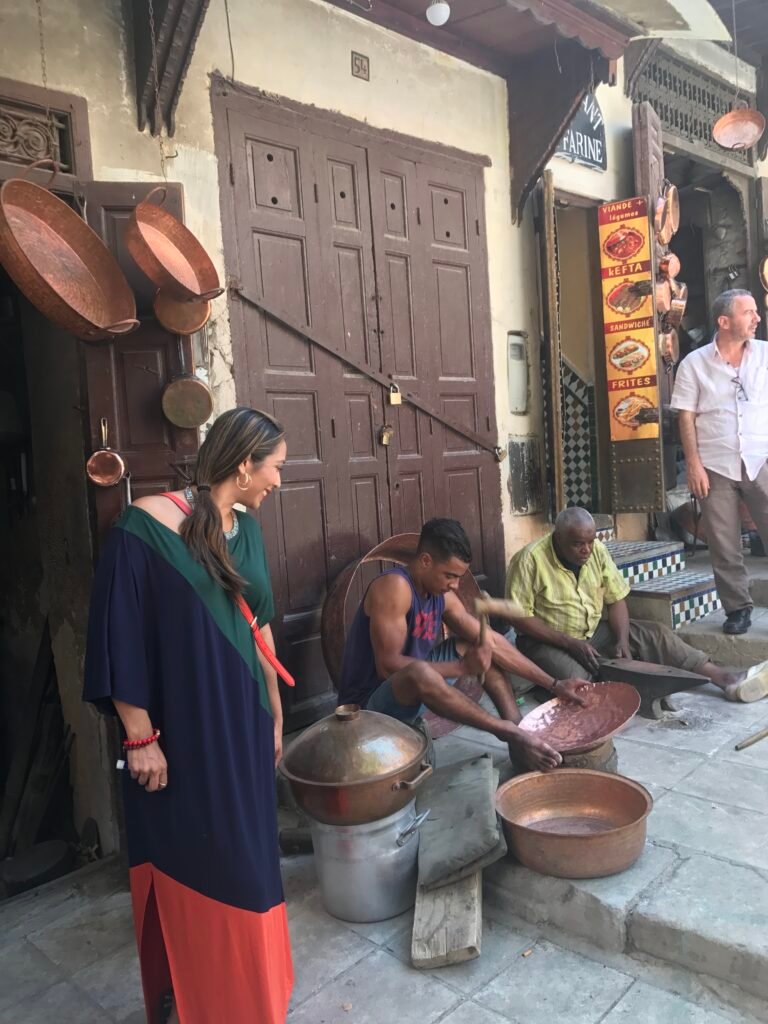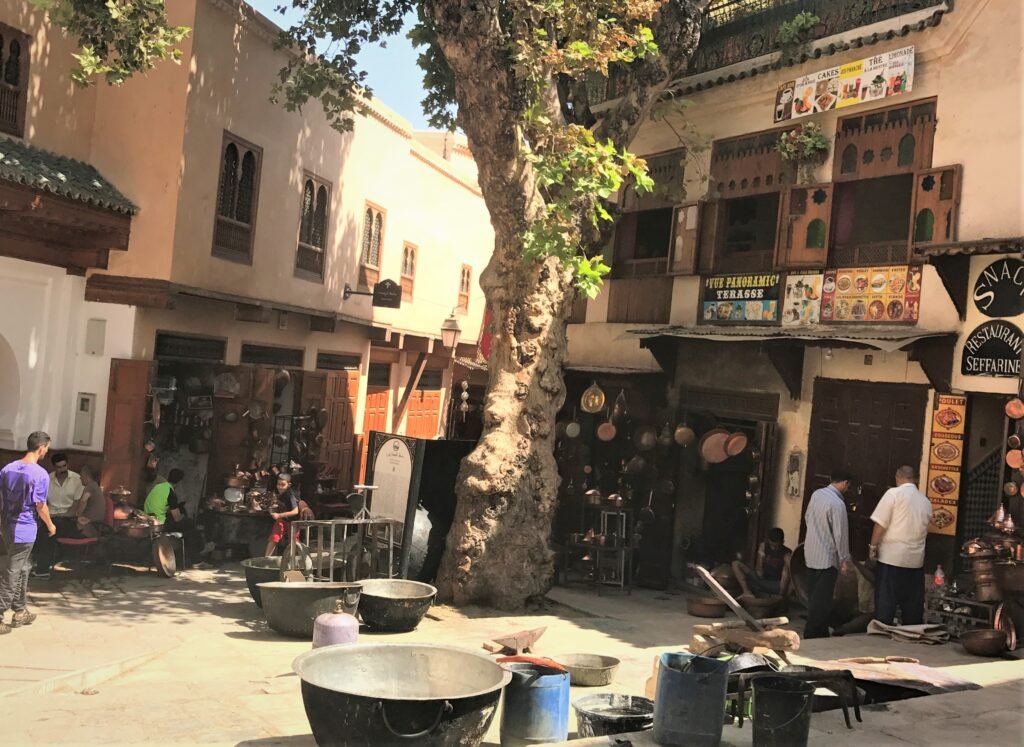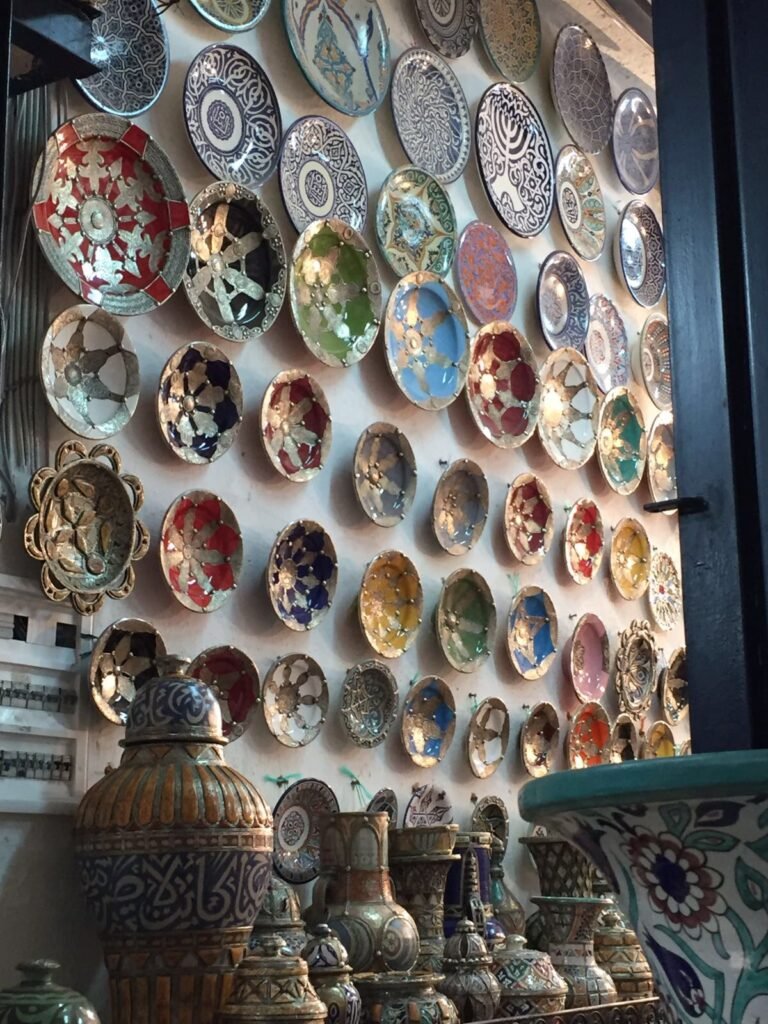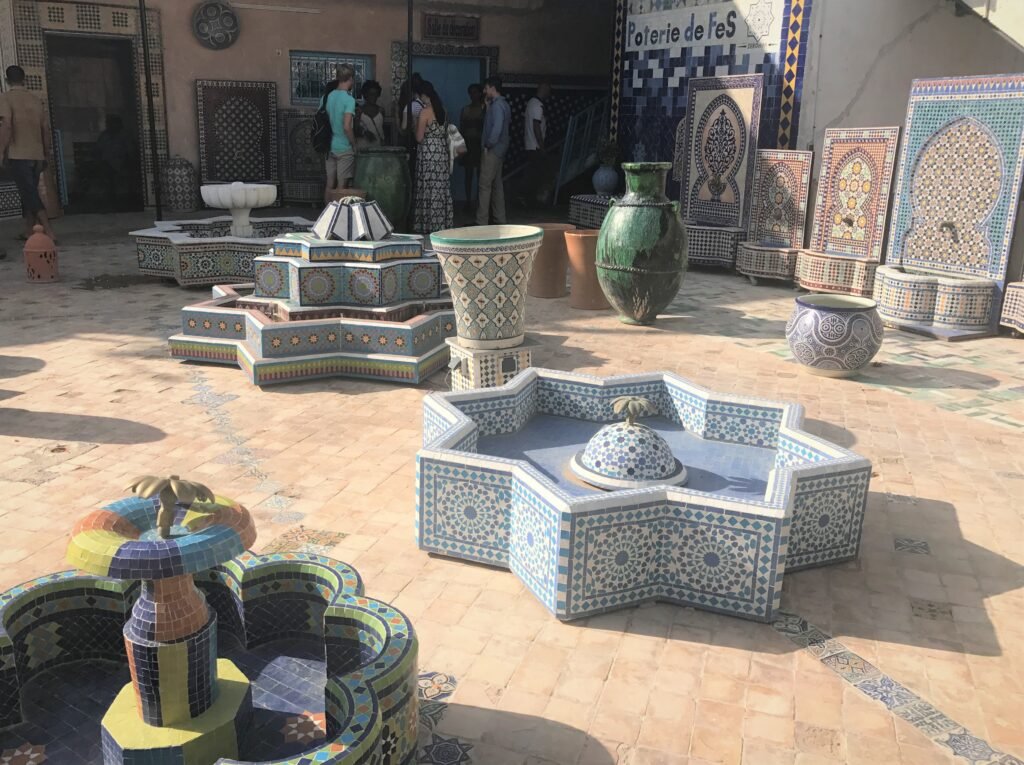The blue gate, known as Bad Bou Jeloud, welcomes you to this labyrinth of 9,000 streets within the Medina. It was July on the 21st century, but here time stopped in the Medieval Age, specifically in the 8th century.

There are no tall buildings, only the mosques of the city prevail, nor are cars heard. There is no contamination, and the scenery is made of clay. There are no asphalt roads, instead the streets are cobbled, and some are so narrow that only one person can enter at a time.
As we entered, the images of the famous Brazilian soap opera “The Clon” came to my mind, which was broadcast in my native Ecuador during primetime in 2001.
I was captivated with that story from the beginning. Each woman with Islamic veils reminded me of Jade, the main character, and the ladies’ faces, of the character Soraide. I was even excited when I heard the names of the merchants shouting: Mohamed, Said, Ali or Mustafa.
After 16 years (from the time I saw “The Clon”) I had finally achieved my dream. I was in Morocco, specifically in Fez. An Arab city that visually enchanted me for being a time capsule and having deep-rooted Muslim traditions.
The Medina of Fez is walled, which is generally the case. To immerse myself in the local customs, I stayed in a Riad, which are the typical houses. Outside it had a tiny door, but inside it was large – with an interior patio, fountains and trees – similar to the Uncle Ali’s TV character house.
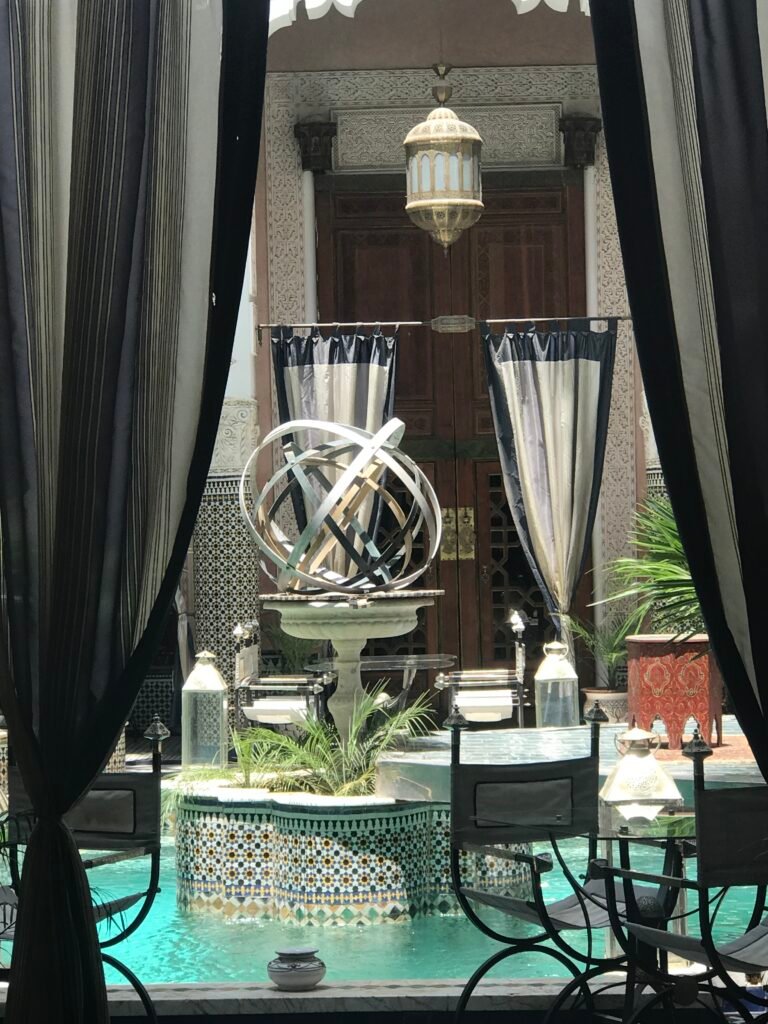
My surprise was that another Alí received us, exactly as in the soap opera. The tall, skinny boy dressed in a robe invited us to have the famous mint tea and opened the map of the city. It was an almost impossible mission to move alone in the Medina and more complicated when you are a woman. My best option was to hire a tour guide.
Along with Hassan our guide, the six-hour adventure began in at least half of the 300 neighborhoods that make up the ancient city of Fez El-Bali. The streets have names written in Arabic and you will hardly go through the same area again. But the guide knew them like the palm of his hand.

More than 9,000 streets are part of The Medina in Fez. 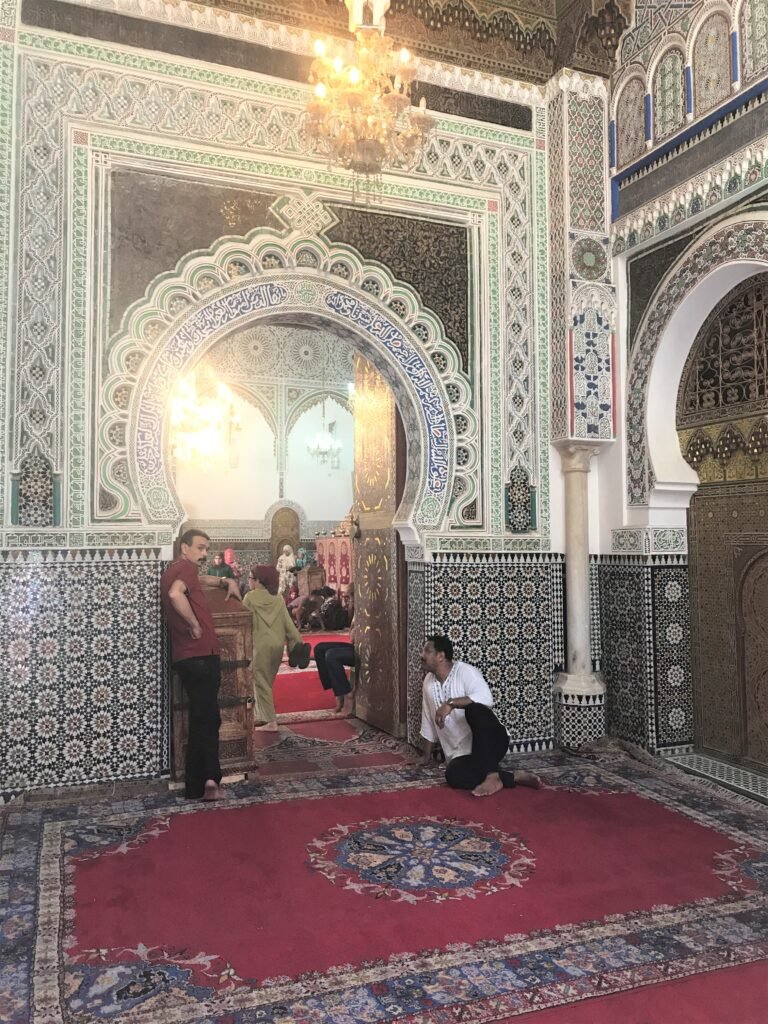
Nestled in the spice market you can see a giant cedar door that is the entrance to Madrasah or Medersa Al-Attarine, the oldest Koranic school. Its most remarkable features are the marble columns, the tiles and the elaborate carvings made piece by piece by its craftsmen. Its central fountain is used for purification.

The enter of the Medersa The Al-Attarine.
The city is known for having the greatest artisans. It is inevitable that the guide will take you shopping, to the stores of his friends making jewelry, rugs, silk sheets, copper pots, leather articles, vessels, and fountains… This is how commerce is part of living in Fez.


Sternly saying “La shukran”, meaning “no thanks”, will save you from taking a rug in your suitcase or even preventing you from buying a carved door and mail it to your home. And that was exactly what we said, after they took us to the terrace to show us the giant rugs made with camel skin, gazelle and agave thread.
Crossing one of its bridges, the unison hammerings sounds created a harmony in Seffarine Square. Abdul – known for being the man with the toughest hands in the goldsmiths and metalworkers’ neighborhood – along with his friends, shape cauldrons, pots, kettles, and copper lamps.
The temperature reached 38 degrees centigrade, the sun was intense, but we were approaching the most photographed site in Fez. The terrible smell indicated proximity. We went up to Mr. Amman’s store and they gave us a sprig of mint to breathe.
We reached the balcony and from there, we saw the men submerged in the colored tubs of the Chouwara Tannery, as if they were posing for a postcard. Just like in the first episodes of the soap opera, when Latiffa showed Jade that Uncle Ali owned half of the coloring tanks.

The Chouwara Tanneryse is a millennial business family of Fez.
In these giant watercolors of white, red, blue, brown and green dyes, the leather of previously slaughtered sheep, cows, goats and camels is transformed. The foul smell is due to the use of pigeon droppings to clean the leather and remove the fat. It’s astonishing how they can work in those conditions.
Dozens of families are engaged in this thousand-year-old business and the leathers are exhibited on their terraces while they complete their drying process. Later on, the fine coats, shoes and wallets go to their stores and after that, they’re sent to Italy or Paris, where many will be branded with the labels of recognized fashion houses.
Every corner in Fez was charming to me: Donkeys everywhere, for transporting cargo; Camel heads hanging in the meat market; the fountains decorations; the colors of the tiles; the elegance of its mosques and Koranic schools; the women dresses. But, above all, the stores, the veils, the traditional shoes, the bags, the ceramics, and the argan oils that specially caught my attention.
As the night came down on us, while waiting for our dinner on the terrace of the Riad, a song came from the speakers of the mosques. It was the call to prayer for all Muslims. Our waiter Hassan and the cook Nabila had to enter to pray towards Mecca, as is their ritual.
And with this moment, we ended up this adventure where I lived the fantasy of being in “The Clon” for one day. I got to see with my own eyes, that even though the centuries have passed in Fez, its culture and religious traditions are still intact.
To note:
- The best way to get to Fez is by train. Their carriages are comfortable and air-conditioned. The price from Marrakesh is US$ 33 and from Casablanca US$ 17. It worked for me to ask the hotel having a taxi pick me up at the station. Although if you request this convenience, they charge you $ 10, when a regular one on the street charges you US$ 1.
- Walking by yourself through the Medina is an extreme sport. It is advisable to do it with a guide. This will prevent passersby insistently asking you to tip them if they help you with any information. The price of the guide varies between $ 20 and $ 30 per person.
- Women do not have to cover their heads, but it is expected that you wear modest and loose clothing without low necklines and covering your shoulders.
- Arabs are merchants by nature. They will ask a very high price for their products, but if you haggle, you can take down the price in half.
- Entrance to mosques is prohibited for non-Muslims. But you are allowed to take photos at its entrances.
- Fez also has a modern city, outside the walls. You will find shopping malls, supermarkets and fast food restaurants.
- Fez is considered part of the Cultural Heritage of Humanity, according to UNESCO, and its Medina is the largest pedestrian zone in the world. It has 300 neighborhoods and 500,000 habitants.




